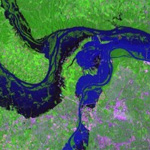Resource:
Interactive Dynamics for Visual Analysis: A taxonomy of tools that support the fluent and flexible use of visualizations

- Links: Website | ACM Queue Magazine
- Tags: Data Visualization, How To, Online Tools, Public Information, Reporting Tools
The ACM’s Queue magazine has a new, comprehensive taxonomy of visualization techniques drawing from the theories of Edward Tufte and citing examples from academia, government, and the excellent NYT visualization team. This list contains 12 steps for turning data into a compelling visualization: Visualize, Filter, Sort, Derive, Select, Navigate, Coordinate, Organize, Record, Annotate, Share, & Guide….The citations alone make this an article worth bookmarking.” Source: Slashdot
The increasing scale and availability of digital data provides an extraordinary resource for informing public policy, scientific discovery, business strategy, and even our personal lives. To get the most out of such data, however, users must be able to make sense of it: to pursue questions, uncover patterns of interest, and identify (and potentially correct) errors. In concert with data-management systems and statistical algorithms, analysis requires contextualized human judgments regarding the domain-specific significance of the clusters, trends, and outliers discovered in data….
The goal of this article is to assist designers, researchers, professional analysts, procurement officers, educators, and students in evaluating and creating visual analysis tools.” Source: ACM Queue
The Journalism Accelerator is not responsible for the content we post here, as excerpts from the source, or links on those sites. The JA does not endorse these sites or their products outright but we sure are intrigued with what they’re up to.
Topics: Craft Resources Technology









Weigh In: Remember to refresh often to see latest comments!
1 comment so far.
I’m a big believer in Edward Tufte’s approach to the visual display of information and glad to hear of ACM’s Queue taxonomy project. Had a chance to see him speak a few years back and was most impressed by his display of poor graphic models. These are visual displays that skew, or mis-represent data in a way that mis-informs the viewer.I find having an awareness of this type of display has made me much more analytical and critical of all visual displays of data.